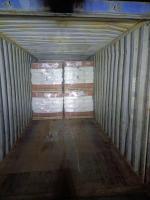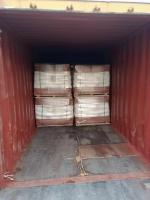Our Products
Polyacrylamide / Cationic polyacrylamide topfloc RHH714 can be repalced by Chinafloc C3012

Cationic polyacrylamide topfloc RHH714 can be repalced by Chinafloc C3012
Topfloc RHH 714 is a cationic polyacrylamide (CPAM) flocculant produced by E-Young Chemistry Co., Ltd. This high molecular weight polymer is designed for effective flocculation and precipitation of suspended solids, particularly in acidic environments (pH < 7).
Cationic polyacrylamide (CPAM) is a versatile polymer with a wide range of industrial applications. Its positive charge, high molecular weight, and excellent water-solubility make it ideal for numerous processes, particularly where the treatment of water, sludge, or other negatively charged materials is required. Below is an in-depth exploration of its main applications, segmented into key industries and uses.
1. Wastewater Treatment
One of the most significant applications of CPAM is in the treatment of wastewater, including municipal and industrial effluents.
-
Flocculation of Suspended Solids: CPAM effectively neutralizes the negative charges on suspended particles in water, promoting flocculation and sedimentation. It binds particles together to form larger aggregates (flocs) that can be more easily removed by filtration or settling.
-
Primary and Secondary Treatment: CPAM is widely used in both primary and secondary stages of wastewater treatment. In primary treatment, it aids in removing suspended solids and organic matter. During secondary treatment, it enhances the efficiency of biological processes by improving sludge settling and dewatering.
-
Sludge Dewatering: In wastewater treatment plants, large amounts of sludge are generated. CPAM is instrumental in dewatering sludge by consolidating particles and reducing water content. This process reduces the volume of sludge, lowering transportation and disposal costs.
-
Applications in Industrial Effluents:
- Textile Industry: Removes dyes, chemical residues, and suspended particles.
- Chemical Manufacturing: Neutralizes and settles fine particles from effluents.
- Food Processing: Helps in clarifying wastewater laden with organic materials and fats.
2. Sludge Treatment
CPAM is a critical component in sludge treatment processes, including thickening, dewatering, and stabilization.
-
Thickening: During sludge thickening, CPAM helps to concentrate solids by improving the aggregation of particles. This leads to easier handling and reduced water content.
-
Dewatering Efficiency: CPAM enhances the dewatering process by forming compact and stable flocs that release water more efficiently under mechanical pressure.
-
Stabilization: It is used in advanced sludge treatment processes to improve the stability of the treated sludge, reducing odor and pathogen levels.
3. Paper and Pulp Industry
The paper and pulp industry utilizes CPAM extensively for its ability to improve production efficiency, product quality, and environmental compliance.
-
Retention Aid: CPAM acts as a retention aid by improving the retention of fine particles and fillers on the paper sheet during manufacturing. This reduces material loss and increases the quality of the paper.
-
Drainage Aid: By enhancing water removal during the paper production process, CPAM increases the speed and efficiency of paper machines, saving energy and improving throughput.
-
Flocculation of Fines and Fiber Recovery: CPAM promotes the flocculation of fines, fibers, and other solids in wastewater streams, facilitating their recovery and reuse in the process.
-
Improvement of Paper Strength: CPAM enhances the physical properties of paper, including its dry and wet strength, by improving the bonding between fibers.
4. Oil and Gas Industry
In the oil and gas sector, CPAM finds applications in drilling, production, and wastewater management.
-
Enhanced Oil Recovery (EOR): CPAM is used as a polymer flooding agent in enhanced oil recovery techniques. Its high molecular weight and viscosity improve the mobility of water injected into oil reservoirs, pushing more oil toward production wells.
-
Drilling Fluids: In oil drilling operations, CPAM is added to drilling fluids to control fluid loss, stabilize boreholes, and reduce friction during drilling.
-
Produced Water Treatment: CPAM is employed to treat water produced alongside oil and gas, removing suspended solids, oil, and grease. This ensures that discharged water meets environmental regulations.
-
Fracturing Fluids: In hydraulic fracturing (fracking), CPAM serves as a gelling agent, enhancing the viscosity of fracturing fluids to transport proppants more effectively.
5. Mining Industry
The mining sector utilizes CPAM for ore processing, tailings management, and water treatment.
-
Mineral Processing: CPAM is used to flocculate fine particles in mineral slurries, aiding in the separation of valuable minerals from gangue.
-
Tailings Treatment: It improves the settling and consolidation of tailings, reducing the volume of tailing ponds and minimizing environmental impact.
-
Recycling Process Water: CPAM enables the treatment and recycling of process water, reducing the need for fresh water and lowering operational costs.
6. Agriculture
In agriculture, CPAM contributes to soil stabilization and water management.
-
Soil Stabilization: CPAM is used as a soil conditioner to improve soil structure, reduce erosion, and enhance water infiltration.
-
Irrigation Water Treatment: It is applied to irrigation water to remove suspended solids and prevent clogging in drip irrigation systems.
7. Textile and Dyeing Industry
In the textile and dyeing industry, CPAM aids in treating dye-laden wastewater and improving process efficiency.
-
Color Removal: CPAM is effective in removing residual dyes and pigments from wastewater streams through charge neutralization and flocculation.
-
Process Water Recycling: It enables the recycling of process water, reducing water consumption and minimizing environmental impact.
8. Food and Beverage Industry
The food and beverage industry employs CPAM for wastewater treatment and process optimization.
-
Organic Waste Removal: CPAM facilitates the removal of organic matter, fats, oils, and grease from wastewater streams.
-
Clarification of Process Water: It enhances the clarity of water used in food processing, ensuring product quality and compliance with hygiene standards.
9. Construction Industry
CPAM is applied in the construction industry for concrete admixtures, soil stabilization, and tunneling.
-
Concrete Admixtures: CPAM improves the workability and water retention of concrete mixes, enhancing their durability and performance.
-
Soil Stabilization in Construction Projects: It reduces soil erosion and improves soil stability in infrastructure development projects.
10. Pharmaceutical and Cosmetic Industries
CPAM finds niche applications in the pharmaceutical and cosmetic industries due to its biocompatibility and thickening properties.
-
Thickening Agent: It is used as a thickening and gelling agent in cosmetic formulations, including creams, lotions, and gels.
-
Drug Delivery Systems: CPAM is utilized in controlled-release drug delivery systems for its ability to form stable hydrogels.
11. Leather Industry
In leather tanning and processing, CPAM aids in wastewater treatment and product enhancement.
-
Effluent Treatment: CPAM removes suspended solids, fats, and other organic matter from wastewater generated during leather processing.
-
Leather Quality Improvement: It enhances the softness and durability of processed leather products.
12. Power Plants
Power plants, particularly those using coal, employ CPAM for water and wastewater treatment.
-
Fly Ash Management: CPAM improves the settling of fly ash in ash ponds, reducing environmental impact.
-
Cooling Water Treatment: It treats cooling water by removing suspended solids and preventing scaling.





